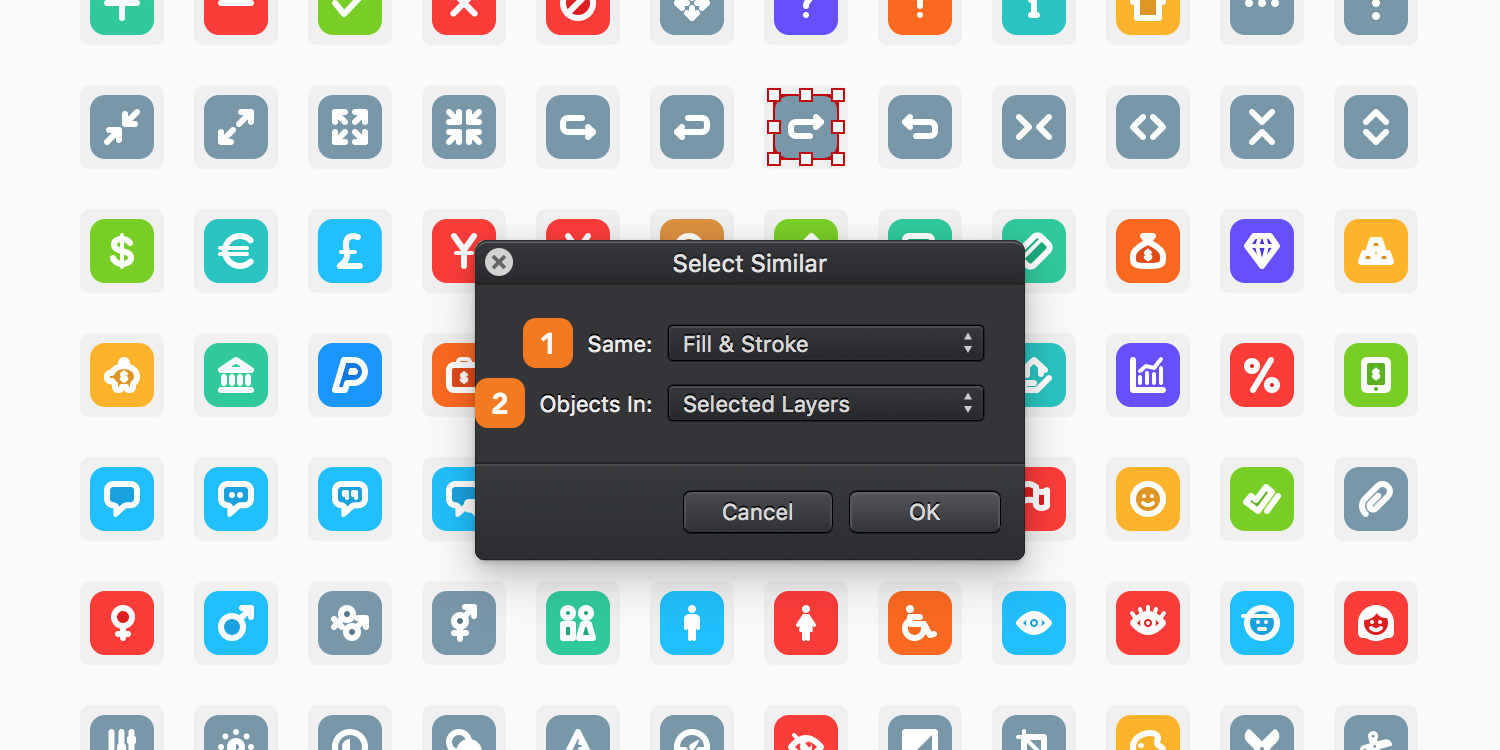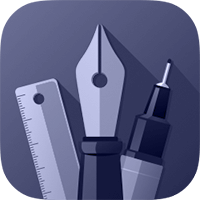Selecting Objects
Choose the Move tool to select and move objects or groups.
Besides being the primary tool for selecting and moving entire objects, it can also be used to quickly resize and rotate a selection of objects.

When one or more objects are selected with the Move tool, the Tool Options bar will display information about the current selection, including the position, size, and types or number of objects selected.
Tip: Use the V keyboard shortcut to quickly select the Move tool.
Select an object by simply clicking on it. Multiple objects can be selected by holding down the Shift ⇧ key while clicking on them.
If the object has no fill or if Outline mode is enabled, selecting it is done by clicking on its border.
Any object from an inactive layer can be selected directly by clicking on it while holding down the Command ⌘ key.
The Bounding Box
The box that appears around the currently selected objects is called a bounding box. Aside from showing the bounds of the selection, it also allows you to quickly transform the selected objects. You can either resize or rotate your selection.
Another way of selecting multiple objects is by clicking on an empty part of the canvas and dragging to create a selection marquee. Objects touched by the selection marquee are selected.
To instead select only the shapes that are inside of the selection marquee, click and hold the Option ⌥ key while dragging the selection marquee.
Selecting Similar Objects
You can quickly select objects with similar appearance attributes using the Select Similar command. Select one of the shapes and then go to Edit > Select Similar to open the Select Similar window.

This feature can be really useful when you're working on complex documents with multiple layers and lots of overlapping objects.
-
Same - Choose the similar attributes that your selected shapes should have from: Appearance, Fill & Stroke, Fill, Fill Color, Fill Type, Stroke, Stroke Color, Stroke Type, Stroke Width or Opacity. When you’re dealing with objects that have multiple fills or strokes, the front fill/stroke is always the one considered by these commands.
Here is how the ten Select Similar commands will work:Appearance - selects all objects that have the exact same appearance attributes, same numbers of fills, strokes and active effects with the same attributes.
Fill & Stroke - selects all objects that have a fill (color and type) and a stroke (color, width and type) with similar attributes.
Fill - selects all objects with a similar fill type and the same attributes.
Fill Color - selects all objects that have a similar solid color fill (no gradients or patterns).
Fill Type - selects all objects that have the same fill type: solid color, gradient, pattern or image. This command works even when the fill attributes are different.
Stroke - selects all objects that have the same stroke with similar color, width, dash type and position.
Stroke Color - selects all objects that have the same stroke color, even the ones with different dash types, thickness or position.
Stroke Type - selects all objects with the same stroke type, continuous or dashed.
Stroke Width - selects all objects with the same stroke width, even the ones with different dash types, color or position.
Opacity - selects all objects with the same opacity value.
- Objects In - Pick Selected Layer to select all objects with similar attributes from the selected layer or Any Layer to select all shapes with similar attributes from all your layers.
Next: Moving Objects >


